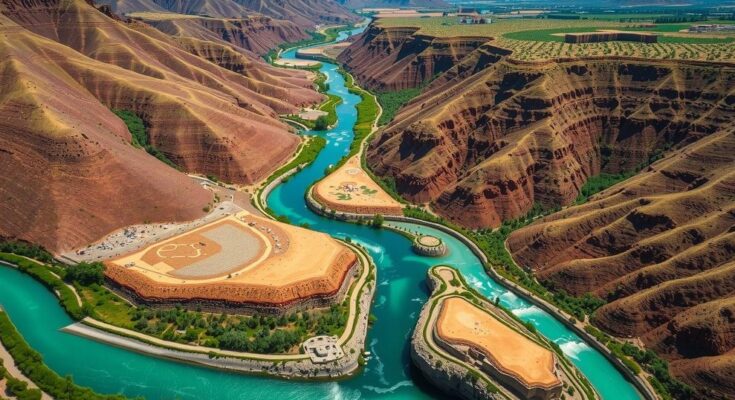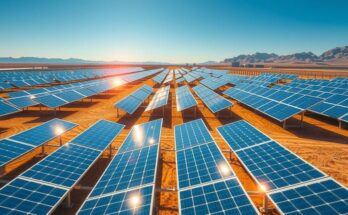Morocco’s “water highway” project aims to redirect northern river water to alleviate urban water shortages, spending $728 million to support Rabat and Casablanca. Critics question its sustainability amid climate change, as six years of drought have caused significant water stress, reducing annual supplies from 18 billion cubic meters to five billion.
The Moroccan government is investing substantial resources into a project designed to alleviate water shortages in urban areas by redirecting water from northern rivers. So far, $728 million has been spent on what is termed a “water highway,” which aims to supply the capital, Rabat, and the economic hub, Casablanca, with much-needed drinking water. The initiative is set to be expanded to include the southern city of Marrakesh in the future.
Officials report that the project has successfully mitigated the immediate water crisis affecting approximately 12 million residents. Mahjoub Lahrache, a senior official in the agriculture ministry, noted that by diverting surplus water from the Sebou River basin, they were able to avert a disaster where these populations could have faced severe water shortages. This situation was critical when Rabat’s primary reservoir nearly ran dry.
Morocco has faced persistent disparities in rainfall, with over half of the national precipitation occurring in merely seven percent of the land, particularly in the Atlas mountain regions. The “water highway” seeks to capture the excess flow from northern rivers before they reach the ocean. A diversion dam in Kenitra captures this surplus water for treatment before being transported through a 67-kilometre underground canal to urban centers.
Since its inauguration in August, the system has delivered more than 700 million cubic meters of drinking water by early March. However, experts express concerns regarding the long-term sustainability of this venture, particularly in light of six consecutive years of drought that have drastically decreased annual water supplies.
Official reports show a decline in average annual water supply from 18 billion cubic meters in the 1980s to just five billion today, indicating systemic stress on Morocco’s water resources. Although some rainfall was recorded in early March, it fell significantly below historical averages by 75%, leading to substantial drought conditions that have extended over an unprecedented timeframe.
Moreover, rising temperatures exacerbate evaporation rates, which can affect the water availability in the northern regions intended for utilization under the new infrastructure. Nabil El Mocayd, a water and climate researcher, cautions that climate change is expected to negatively impact these basins more severely over the next 60 years, questioning the viability of relying on current surpluses.
Demand for irrigation in agriculture continues to put pressure on water systems, as nearly one-third of Morocco’s workforce is employed in the farming sector. Researcher Abderrahim Handouf highlighted that while the “water highway” serves as a temporary solution, adaptation measures such as investing in more efficient irrigation techniques and desalination plants are essential to provide a sustainable future for the population.
In summary, Morocco’s investment in the “water highway” has proven effective in addressing immediate water needs for major cities, preventing a potential crisis for millions of citizens. However, the ongoing challenges posed by climate change, persistent drought, and unsustainable water management practices necessitate caution and strategic forward planning. Policymakers are urged to consider alternative solutions for long-term water supply sustainability to ensure that urban populations have reliable access to this vital resource.
Original Source: www.thedigitalcourier.com




